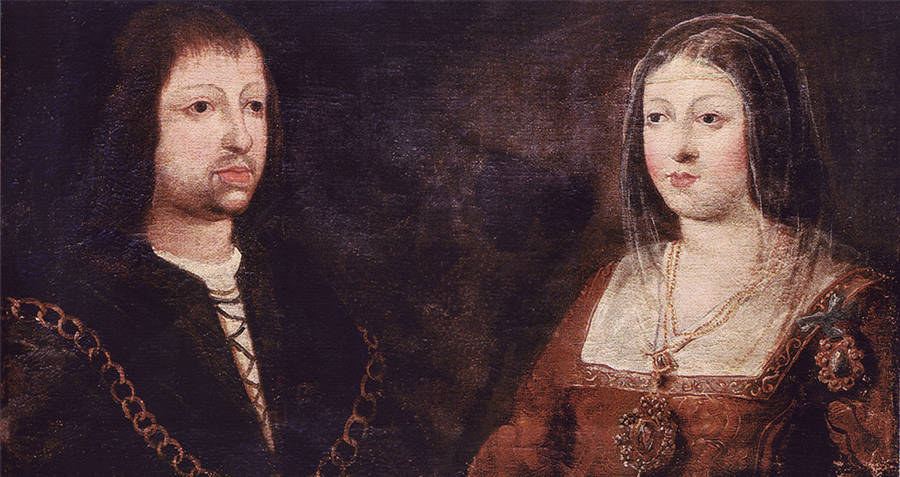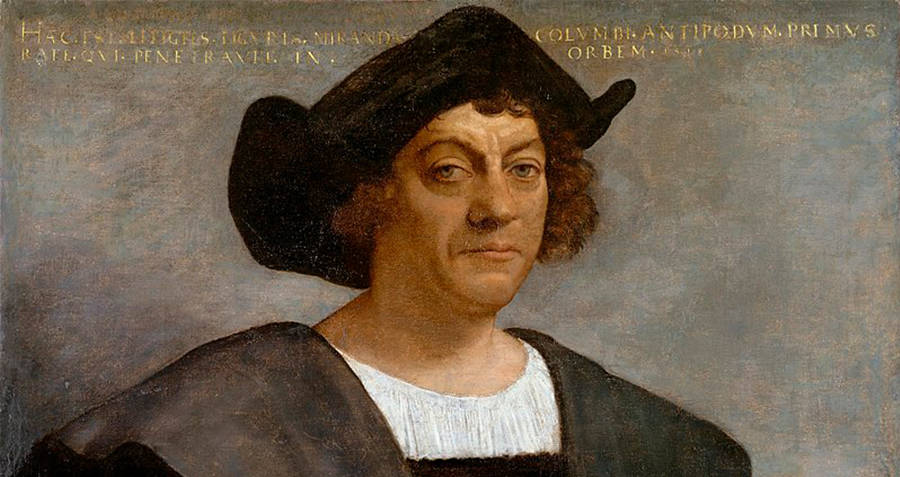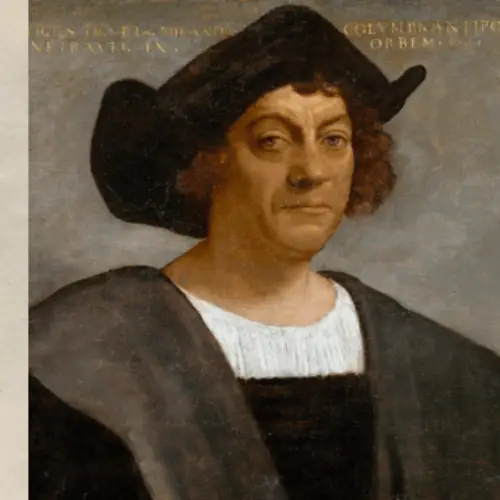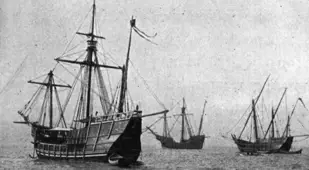Discover the real facts about Christopher Columbus, from the explorers that beat him to the Americas long before 1492 to his notorious boat troubles on the Atlantic.
Just about everyone thinks they know the basic facts about Christopher Columbus’ voyage to the New World: He sailed from Spain in 1492 with three ships — the Niña, the Pinta, and the Santa Maria — in search of a new route to Asia. Landing on what is now the Bahamas, he was greeted by the Indigenous inhabitants and cautiously welcomed.
Then, he returned their hospitality by enslaving the villagers, looting their resources, and infecting them with devastating diseases like smallpox.
For the most part, these Christopher Columbus facts are true. Columbus did sail from Europe to the Americas, and once he got there, he was a ruthless leader, driven by greed and a pirate-like mentality. But there is still a considerable amount of misinformation about his first and subsequent voyages that keep certain myths about him alive.
While it's undeniable that Christopher Columbus' journey marked a seminal turning point in world history, the man's legacy was always destined to be a controversial one. Both above and below are some of the most shocking Christopher Columbus facts that define his complicated place in history.
Facts About Christopher Columbus' Early Life
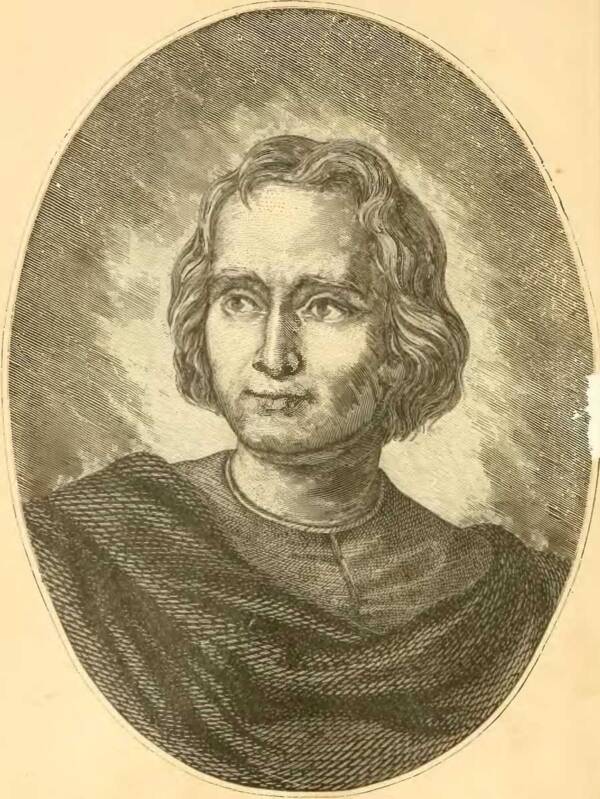
Wikimedia CommonsA portrait of Christopher Columbus as a young man.
Historians know few facts about Christopher Columbus' early life beyond him being born in Genoa around 1451 to a wool merchant and his wife, and that he joined the crew of a merchant ship when he was a teenager.
Traveling around the Mediterranean, young Columbus led a life that was probably typical for sailors of the time. One notable voyage to the Greek island of Khios marked the closest Columbus would ever actually get to Asia.
However, his life as a young sailor came to a violent end in 1476, when pirates attacked the fleet of merchant ships he was sailing with, sinking the boat he was on just off the Portuguese coast.
Clinging to a plank of wood, Columbus was able to swim to shore, where he eventually settled in the Portuguese capital of Lisbon.
Taking a break from the sailor's life, he began studying cartography, navigation, mathematics, and astronomy — and began developing the idea for the voyage that would eventually make him famous.
The Reconquista And The Rise Of Spain
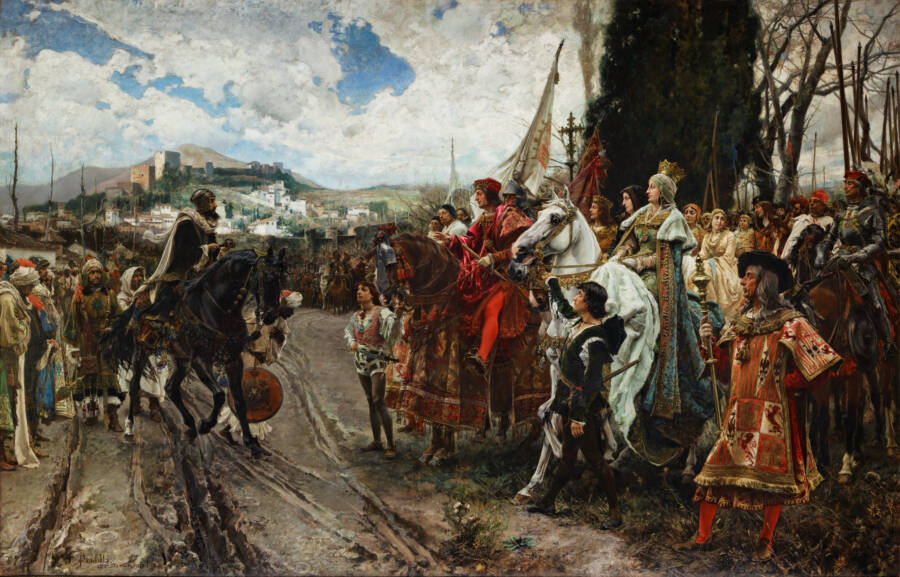
Wikimedia CommonsThe Catholic Reconquista of the Iberian Peninsula ended with the conquest of Grenada in 1492.
While Columbus was studying in Lisbon, the Kingdom of Spain — under King Ferdinand II and Queen Isabella — was completing the Reconquista of the Iberian Peninsula.
Since the late eighth century A.D., the Muslim-majority Moors had ruled much of the Iberian Peninsula, establishing a major Islamic foothold in Europe for just over three centuries.
Beginning in the 1000s, the smaller Christian kingdoms in Iberia began pushing to reclaim the region after Sancho III Garcés established the Christian kingdom of Aragon in the peninsula.
Over the next four centuries, the Muslim foothold in the peninsula was slowly rolled back. By the time a young Columbus washed ashore in Portugal in 1476, Ferdinand and Isabella ruled over a nearly unified Iberian peninsula as the "Catholic Monarchs."
In 1492, the final expulsion of the Moors from Iberia was complete with the conquest of Grenada, making Spain a symbol of European Christian expansion all around the world.
Amid this aura of religious zeal and military victory, Christopher Columbus came to the Spanish court with a plan to cut out the Muslim middlemen that controlled the lucrative trade with Asia. This plan, of course, involved sailing across the Atlantic Ocean to get to Asia.
Having been rejected by several other nations, including England and France, Columbus was initially turned down by the so-called Catholic Monarchs of Spain as well. Many experts believed this trip would be a waste of time.
At the time, Portugal and other countries were already launching voyages of exploration around Africa and becoming wealthy in the process. Although Spain wanted to get in on the effort, it would take some convincing on Columbus' part before the Spanish court agreed to finance the voyage.
However, they did eventually agree to Columbus' plan, and in 1492, Columbus set sail into world history. But the facts about Christopher Columbus from this point forward are often mired in myth.
Voyage To The New World
Setting out from Spain in three vessels on August 3, 1492, Columbus sailed west across the Atlantic for about 10 weeks. By October, there were signs that the crew had grown mutinous. According to Columbus' journal, on October 10, there was apparently some sort of protest aboard the ships:
"Here [the crew] could endure no longer. But [Columbus] cheered them up in the best way he could, giving them good hopes of the advantages they might gain from it. He added that, however much they might complain, he had to go to the Indies, and that he would on until he found them..."
According to later accounts from Columbus and others on board, the situation was far more dire than the journal let on — and there may have even been a plot to throw Columbus overboard and sail back to Spain.
But the very next day, signs of land — including a branch covered in berries floating in the water — buoyed the spirits of the crew. Just after sunset that evening, a sailor named Rodrigo de Triana aboard the Pinta was recorded as the first man to sight land on the journey.
By the next day, they had indeed reached land. Believing that he had arrived in Asia, Columbus set foot on an island in what is today the Bahamas.
Columbus spent the next several months sailing from island to island in the Caribbean searching for the precious metals, spices, and commodities that Europeans knew to be sourced from Asia. Though he did locate some gold and spices, he didn't find nearly as many riches as he was expecting.
When Columbus journeyed back to Spain in 1493, he had to leave behind a few dozen men in a hastily built settlement. He would return later that year in the second of his four voyages to the Americas between 1492 and 1502 to resume his search for goods. But yet again, Columbus never found most of the riches that he initially sought.
In an attempt to give Spain some "commodity" of value, Columbus tried to send Queen Isabella 500 enslaved Indigenous people from the Americas. Isabella — who considered any "discovered" Indigenous people to now be de facto subjects of Spain — was horrified and rejected Columbus' offer.
In the decades and centuries that followed, of course, powerful Europeans would be considerably less horrified at an idea like this and would actively promote a robust slave economy in the Americas.
Separating The Myths From The Facts About Christopher Columbus' First Voyage
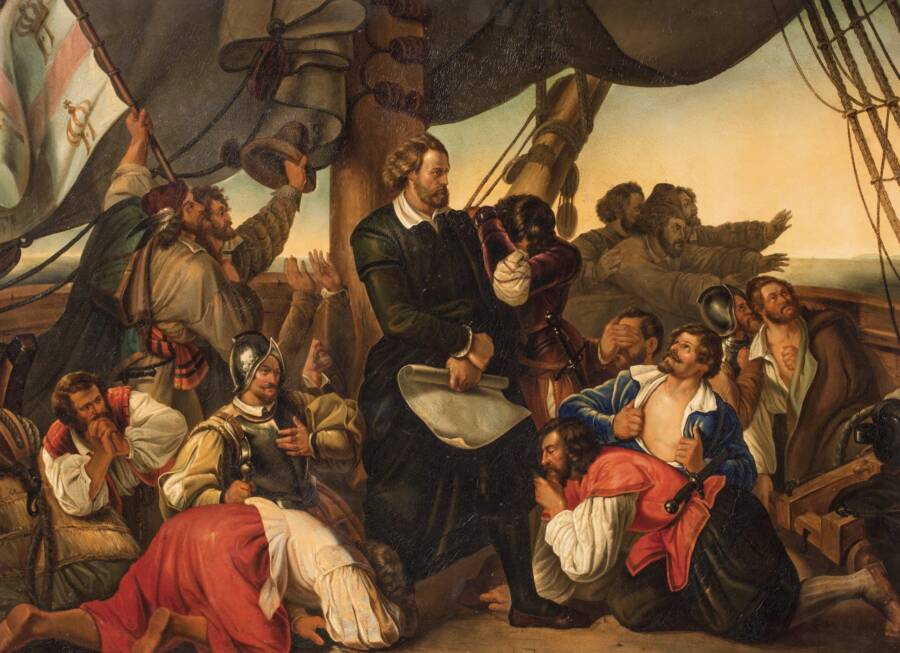
Wikimedia CommonsMuch of Christopher Columbus' first voyage has been heavily mythologized.
By now, one of the more well-established facts about Christopher Columbus is that he didn't actually "prove" that the Earth was round. That had been known since the time of the ancient Greeks, and navigators in Europe had a somewhat accurate idea of the circumference of the Earth. Columbus, however, did not.
His plan was to bypass the established trade routes to Asia that were tightly controlled by Muslim caliphates. He also wanted to avoid the arduous sea route pioneered by Portuguese traders, who sailed all around the massive continent of Africa in order to get to Asia.
Believing the nation of Japan to be only 2,300 miles to the west of Spain's Canary Islands, Columbus planned a voyage to reach the so-called East Indies by sailing across the Atlantic Ocean.
Meanwhile, the real distance to Asia across the Atlantic was closer to 12,000 miles — not 2,300. At the time, many experts told Columbus his calculations were way off and that his journey would take far longer than he thought. In fact, it was this issue that caused the British and French courts to reject Columbus' plan.
Believing this tract of ocean to be completely devoid of land, they thought it would be a massive waste of time and money. In their minds, it made more sense to simply sail around Africa, where there were at least ports to stop at along the way to conduct trade.
Another major misconception about Columbus' first voyage is that he was the first European to find the Americas — he was not. Icelandic Vikings — led by explorer Leif Erikson — were the first known Europeans to set foot in the Americas around 1000 A.D., beating Columbus by nearly 500 years.
But even if Erikson had never gone on his journey, it would still be wrong to claim that Columbus "discovered" the Americas. After all, millions of Indigenous people had already been living in the Americas for thousands of years. So that means that they had to discover the so-called New World first.
As for Columbus himself, he remained convinced that he had reached Asia until the day he died and he never knew the true significance of his voyage. But that didn't stop untrue facts about Christopher Columbus from spreading like wildfire.
The Complicated Legacy Of Columbus

Wikimedia CommonsUnable to return to Spain with the riches he promised, Columbus tried to offer Indigenous peoples as slaves to a horrified Spanish Court.
It would soon become apparent to European powers that the Americas were entirely separate from Asia. This idea was first popularized by the Italian explorer Amerigo Vespucci in the early 1500s. It was also soon apparent to Europeans that they could potentially colonize this "new" land.
Later voyages to the Americas from Spain, Portugal, England, and other European countries would lead to the colonization of the Americas, the genocides of Indigenous peoples, and the devastation of much of their civilizations. In many ways, Christopher Columbus' voyage can be seen as the start of the early-modern era of slavery, which would include both Indigenous peoples in the Americas and people forcibly taken from Africa.
The exchange of diseases, vegetation, and animal life — previously separated by the ocean and by many thousands of years — also began with Columbus' voyages and transformed the civilizations of the separate hemispheres irrevocably. This process is now known as the Columbian Exchange.
The introduction of European diseases to the Americas was especially noteworthy since they were far more virulent than the diseases transmitted from the Americas to Europe. Diseases like smallpox and measles spread quickly throughout the Americas, wiping out many Indigenous people over the next couple of centuries.
This depopulation of the North and South American continents left the surviving Indigenous people unable to effectively defend themselves from the ruthless exploitation they would suffer at the hands of the European colonizers for centuries.
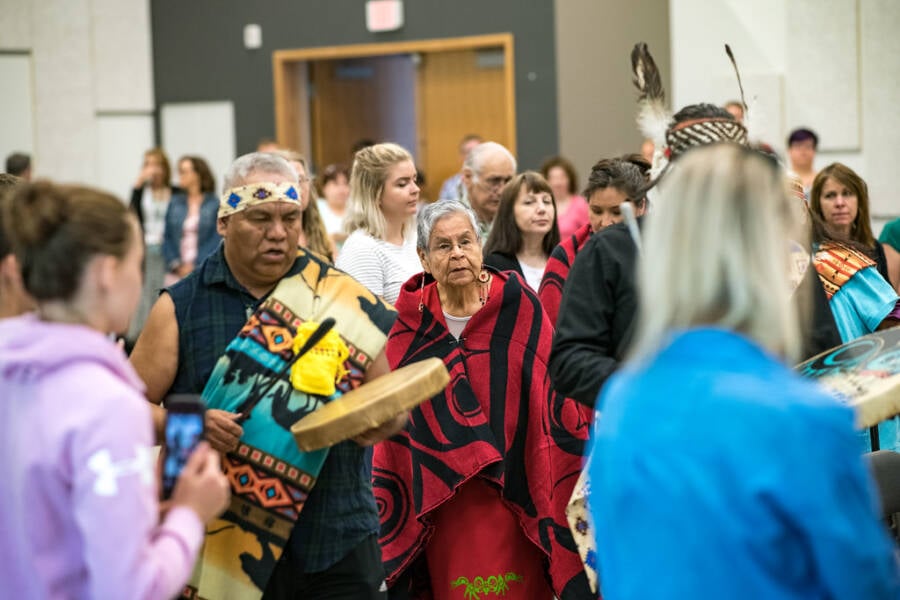
University of the Fraser Valley/FlickrCelebrants at an Indigenous Peoples' Day event.
Columbus' legacy was always destined to be a controversial one. But Columbus was not a bystander to the exploitation of Indigenous people — he was an active participant. In a journal entry about his first interactions with the Native people of the Bahamas in 1492, he wrote:
"They willingly traded everything they owned ... They were well-built, with good bodies and handsome features ...They do not bear arms, and do not know them, for I showed them a sword, they took it by the edge and cut themselves out of ignorance. They have no iron ... They would make fine servants ... With fifty men we could subjugate them all and make them do whatever we want."
In recent years, the celebration of Columbus' voyages has been revisited as more scholarship gives voice to the Indigenous peoples of the Americas who were brutally subjugated soon after Columbus arrived in the New World.
The push to establish an Indigenous Peoples' Day on the same day as Columbus Day continues to grow. States like Minnesota, Maine, Alaska, and Vermont now observe the holiday in response to recent activism.
"Columbus Day is not just a holiday, it represents the violent history of colonization in the Western hemisphere," said Leo Killsback, a professor of American Indian Studies at Arizona State University and citizen of the Northern Cheyenne Nation of southeastern Montana. "Indigenous Peoples' Day represents a much more honest and fair representation of American values."
Clearly, the true facts about Christopher Columbus' voyages continue to fuel controversy to this day. His journeys were among the most consequential moments in world history and will likely remain so for years to come.
After learning the Christopher Columbus facts above, check out Edward Curtis' photos of Native American culture in the early 20th century. Then, read about the Native American genocide and its tragic legacy.


